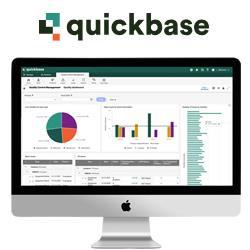The study investigated the current and future direction of the market and the opportunities smart grid represents for participants in the value chain.
Ron Zimmer | CABA
CABA recently released its Impact of Smart Grid on Connected Homes landmark research study. The study investigated the current and future direction of the market and the opportunities smart grid represents for participants in the value chain. The study examined the concept of connected home desirability for consumers and the perceived benefits of controllability and energy savings that homeowners may derive. Ron Zimmer, CABA President & CEO, talks about both the benefits of the report and the organization.
What is CABA?
 The Continental Automated Buildings Association (CABA) (http://www.caba.org) is a non-profit industry association dedicated to the advancement of intelligent homes and intelligent buildings technologies. CABA is an international association, with over 300 major private and public technology organizations committed to research and development within the intelligent buildings and connected home sector. Association members are involved in the design, manufacture, installation and retailing of products for home and building automation. CABA is a leader in initiating and developing cross-industry collaborative research, under the CABA Research Program.
The Continental Automated Buildings Association (CABA) (http://www.caba.org) is a non-profit industry association dedicated to the advancement of intelligent homes and intelligent buildings technologies. CABA is an international association, with over 300 major private and public technology organizations committed to research and development within the intelligent buildings and connected home sector. Association members are involved in the design, manufacture, installation and retailing of products for home and building automation. CABA is a leader in initiating and developing cross-industry collaborative research, under the CABA Research Program.
What is the CABA Research Program?
The CABA Research Program offers a range of opt-in technical and advisory research services designed to provide industry stakeholders with collaborative market research and R&D opportunities.
The program is designed to be flexible and to maximize relevant and actionable results for all research sponsors while concurrently sharing and minimizing costs. It leverages agnostic, systematic and proven project management techniques to ensure that realistic and neutral research results are achieved. You can learn more about the program at: http://www.caba.org/research.
Why did you undertake a research project on the impact of the smart grid on connected homes?
Because the connected home market is a fast evolving segment that is being influenced by a number of emerging industry trends. The recent developments in the implementation of end-to-end smart grid at the utility level, as well as the changes witnessed in the area of managed home devices and systems, are expected to further impact the dynamics of this market segment. The connected home suppliers catering to this fast evolving market are facing the challenges of keeping abreast with technology development in meeting new grid infrastructure requirements as well as innovating solutions that are compatible with changing standards and communication topologies.
In addition, there are uncertainties with regard to which technologies will remain current and adaptable to emerging changes in home area networks (HANs) requirements, energy dynamics as well as smart grid infrastructure deployment. For industry participants, it is critical to be well informed of the distinct challenges, the market gaps, the influence of key channels and the evolving market environment to execute a successful market strategy. This research project aims to do that.
What were the objectives of the report?
The purpose of this collaborative landmark research study by CABA was to greatly improve the understanding of residential smart grid development and deployment in terms of: identifying market demand and growth areas for new products; comparing competing product strategies and communication of competitors; determining product preferences for end-users; developing messaging that resonates with the target audience; defining critical success factors to expand product offerings to end-user markets; and establishing a market approach and foundation for strategic decision-making efforts. The report was undertaken under the request, input and supervision of many organizational sponsors.
What are some of the key findings from the study?
Frost & Sullivan’s research indicates that the concept of a connected home is desirable for consumers due to the perceived benefits of controllability, energy savings and security that home owners derive from it. However, lack of awareness of the right solutions, confusion regarding which solution is best suited for their needs and why, and most importantly, the real benefit derived for the cost they pay are some of the key issues that have kept this industry from moving forward.
The key takeaways of this research are the following:
- Limited customer engagement and lack of personalization of solutions, as well as the lack of predictive and self-sensing capability of solutions, will continue to hinder value demonstrations in the connected home industry.
- The industry horizon will continue to be dotted by both pure-play and turnkey players. Competitive advantages will, however, depend upon scalability of solutions to accommodate the emerging demand in technology integration.
- The IP influence will dominate the convergence in domain expertise, but practicalities of full convergence are questionable and not a near-term reality.
- The connected home’s relationship with energy is likely to be further stressed with the ability of such a home to integrate with the smart grid; however, optimized solutions in this area are currently only demonstrative in nature, with limited initiatives undertaken by the utility industry.
- Industry participants need to collaborate in a cohesive manner to make smart home solutions work together; however, both conceptual frameworks and technology development initiatives should work simultaneously toward this end.
How will this report help its sponsors?
The research is designed to create the foundation for potential next steps including: product/services research and development; recommendations and business decisions; vertical market strategies and strategic alliances; training and coaching; and providing information on product demand into other parallel market segments and other business areas
Who sponsored the study?
Sponsors of this CABA study include: CableLabs®, ClimateTalk Alliance, Comcast Communications, Consolidated Edison of New York, Consumer Electronics Association, Energent Incorporated, fifthplay nv, Hydro One Networks Inc., Hydro Quebec, IBM, Intel Corporation, Landis+Gyr, Microsoft Corporation, Pacific Gas and Electric Company, Pella Corporation, Philips Lighting, Qualcomm Incorporated, Samsung Telecommunications America LLC, Southern California Edison, Sykes Assistance Services, TELUS, Tridel Corporation, TRLabs and the Z-Wave Alliance.
Who conducted the research study for CABA?
Frost & Sullivan (http://www.frost.com), an international consultancy with deep industry expertise in all facets of the smart grid, the connected home market, and its various segments, conducted the research study. The research was undertaken with input from CABA’s Smart Grid Working Group.
CABA’s Smart Grid Working Group, under the organizations Connected Home Council (CHC), undertakes the examination of modes of deployment for the residential smart grid, and the implications this will have on market prospects for connected home solutions. Committee members have developed a set of objectives and research areas that require validation. These include an understanding of the changing business models, technology commercialization prospects in the event of Smart Grid deployment, changes to communication standards, and time to market, amongst others.
From the inception of the CHC Smart Grid Working group, Frost & Sullivan have followed the direction of the group, and closely understand group developments and the research project needs. Having undertaken several complex landmark research studies previously for CABA, they have demonstrated expertise in a large array of different business challenges, such as market penetration, vertical market expansion and growth strategy -- utilizing extensive contacts across the value chain, including suppliers, distributors, end-users, regulators and other industry experts.
An international pool of experts and researchers supports Frost & Sullivan, using best-in-class consulting methodologies and experience in the field of smart technologies and general home and building automation technologies. From a unique cross-industry and cross-functional perspective, they have proven their ability to find growth opportunities for research study participants, across different industries in the smart grid and connected home technology sectors and adjacent markets.
How can learn more about the report and obtain a copy?
To learn more information about CABA's Impact of Smart Grid on Connected Homes landmark research study, please contact: George Grimes, CABA's Business Development Manager at: 613.686.1814 x226 or grimes@caba.org.
The content & opinions in this article are the author’s and do not necessarily represent the views of AltEnergyMag
Comments (0)
This post does not have any comments. Be the first to leave a comment below.
Featured Product


